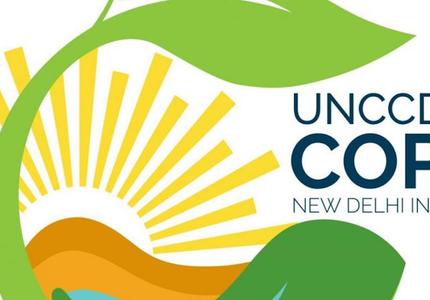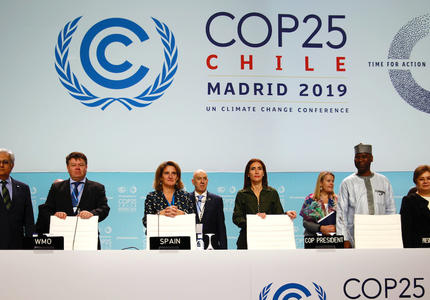In May 2018, over a hundred countries voted in favour of a resolution subsequently adopted by the United Nations General Assembly (UNGA), paving the way towards launching consultations on a potential Global Pact for the Environment. Following this, an ad hoc open-ended working group was established, which should, after three sessions, render its view on the relevance of convening an intergovernmental conference for the creation of a new international instrument. The second substantive session of this group was held between 18 and 20 March in Nairobi (Kenya). What are the key take-aways from this session?
During the first session held in January 2019, the original proposal, that of creating a legally binding instrument, i.e. the Global Pact for the Environment, was not formally discussed. Instead, discussions were centred around the findings of the UN Secretary General’s technical and evidence-based report1 as well as identifying gaps in International Environmental Law (IEL). These deliberations did not reach a consensus. In this second session, some gaps were mentioned more than others: risks of incoherence, lack of effective implementation due to inadequate means or reporting and compliance mechanisms, etc. The fragmentation in IEL is viewed by certain countries as the primary gap which needs to be filled, while for others it was not necessarily seen as a failing2 .
However, the second session enabled the group to move away from the ultimately unproductive discussion on gap identification and move instead towards considering the options at hand. In this context, the option of a legally-binding instrument was discussed as one among the many possible options put forth by country delegates. Although a general consensus seems to have emerged on the need to do more and better for the environment and make IEL more effective, the question of the most appropriate tool to achieve that goal still remains to be found; in this respect, the Pact proposal, which must still overcome several difficulties in the negotiation process, remains far from a common consensus.
Need for leadership and a shared diagnosis
Prior to his resignation in November 2018, Erik Solheim, the Executive Director of the United Nations Environment Programme (UNEP), was an enthusiastic supporter of the Pact proposal. The new director, Inger Andersen, has been nominated but has not yet assumed office. As a result, the functioning of the UNEP secretariat is weak, even paralysed, to the point where it cannot (or does not want to) really evaluate, inform or guide the discussions. This has contributed to a lack of shared understanding and diagnosis between States with respect to the issues under discussion. The concerns and questions raised by a number of countries (Germany, Switzerland and New Zealand in particular) were not adequately met with appropriate answers or addressed through independent legal opinions from international organisations. Moreover, a feasibility study on the possible impacts and value added of the various options put forth by the different countries is lacking. In such a scenario, the working group has had to rely on the insights of certain delegates with expertise in the field of IEL (Uruguay and Micronesia, among others).
In order to move forward, such a negotiation process needs strong leadership, either from several member States or from the Co-Chairs of the Group, who have thus far taken a backseat in the discussions. Several delegations have called for the process to be transparent and geared towards a consensus-based outcome, others have even gone as far as asking the Co-Chairs to present delegations with a clear roadmap. As a result, the responsibility will rest heavily on the Co-Chairs in the next and last session to enable the emergence of a consensus and the drafting of meaningful recommendations for the United Nations General Assembly.
This lack of leadership can also be seen in the relative weakness of the European Union. Caught up in arriving at a delicate internal consensus between Member States that support the Pact proposal and those that fear that such a proposal would weaken IEL, the EU is struggling to provide a clear direction to other States.
A receptive environment, but still great divergence on proposals
Nevertheless, the general environment is not as unfavourable as it seemed in the January session. There is an overall willingness to work on concrete proposals to strengthen IEL implementation. The main opponents to the Pact proposal—like the United States for instance—did not attempt to block the process. On the other hand, there is strong support in favour of a legally-binding instrument from the following countries: France, Morocco, Senegal, Micronesia, Costa Rica, Peru, Uruguay, Spain, Burkina Faso, Nigeria and Cameroon. Moreover, China is clearly receptive to the process, while still explicitly drawing its red lines on the following points: non-integration of human rights, consideration of the principle of common but differentiated responsibilities and the sovereignty of states over natural resources. China further reiterated its support for this process at the highest political level within the joint declaration made by France and China on March 25, 20193, .
This ultimately favourable environment enabled concrete proposals to be put forward. Several options were identified to strengthen the implementation of IEL, but remain quite diverse in scope, ranging from a legally-binding instrument to a high-level political declaration, or a resolution by the United Nations General Assembly. The European Union, for its part, declared itself to be in favour of a potential compilation of these different options: a way of saying that even though it was internally divided between the different options, it remained open to discussion with other delegations. And civil society expressed hope that this process could be concluded by 2022, in time for the 50th anniversary of the Stockholm United Nations Conference on the Human Environment.
Views also diverged over the contents of an instrument. While there is considerable support for the codification of principles (in the form of a pact), there is still no consensus on this point, especially in common law4 countries. It is from this point of view that some countries like Uruguay have suggested a “compilation” or “list” of principles. Meanwhile, several States, especially from developing countries, have stressed the importance of increased access to the means of implementation, citing the relevant finding in the UNSG report5 .
At this stage, a clear majority or attempt to compromise between these different proposals cannot yet be discerned.
An uncertain future
The third and last session of negotiations will take place in Nairobi from May 20-22. It should define the recommendations to be presented to the United Nations by June, which may eventually result in the launch of formal negotiations for the creation (or not) of an instrument, a declaration or any other option. Both the States and the civil society have up to April 12 to send their proposals to the Co-Chairs.
In the meantime, it is crucial that countries most in favour of a legally-binding instrument develop a convincing common argument that can build coalitions; this process might need building a compromise. This seems even more important in a context where a great number of countries still do not have a clear preference and could therefore support a compromise that includes both principles and the means of implementation in the resulting instrument.
The May session should not be the end point; rather it should help move this process forward and initiate more concrete discussions for the strengthening of IEL. Such an outcome is far from guaranteed at this stage.
The recent Escazú Agreement (The Regional Agreement on Access to Information, Public Participation and Justice in Environmental Matters in Latin America and the Caribbean), cited by several delegations, could bring fresh perspectives to the negotiations on the Pact, which aims to strengthen the implementation of international environment law.
- 1https://wedocs.unep.org/bitstream/handle/20.500.11822/27070/SGGaps.pdf?sequence=3&isAllowed=y
- 2Read the Issue Brief by Iddri: What to expect from a Global Pact for the Environment ?
- 3,https://www.elysee.fr/emmanuel-macron/2019/03/26/declaration-conjointe-entre-la-republique-francaise-et-la-republique-populaire-de-chine-sur-la-preservation-du-multilateralisme-et-lamelioration-de-la-gouvernance-mondiale
- 4http://www.oxfordreference.com/view/10.1093/oi/authority.20110803095627595
- 5See point B-87 of the report (page 41): https://wedocs.unep.org/bitstream/handle/20.500.11822/27070/SGGaps.pdf?sequence=3&isAllowed=y






